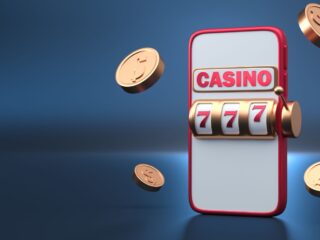
In a world increasingly aware of the urgency of climate change, sustainability is no longer a buzzword—it’s a necessity. But getting people to care and take action? That’s where gamification steps in.
By turning eco-conscious behaviors into fun, rewarding, and even competitive experiences, developers have managed to breathe new life into sustainable living. From recycling challenges to tree-planting missions, gamified sustainability platforms are bridging the gap between good intentions and real-world impact.
What is Gamification, and Why Does It Work?
Gamification is the use of game design elements—like points, achievements, leaderboards, and challenges—in non-game contexts. Think of your fitness app that gives you badges for reaching your daily steps or your budgeting tool that celebrates each savings milestone.
When applied to sustainability, gamification helps make green habits stick by:
- Rewarding eco-actions with virtual or real-world incentives
- Creating a sense of progress through leveling systems or goals
- Tapping into community and competition to keep users engaged
Gamified Sustainability Apps and Platforms
Let’s explore some of the most popular and innovative apps that turn environmental action into interactive fun:
1. JouleBug
This app breaks down sustainable living into bite-sized actions like using a reusable mug or biking to work. Users earn points, compete with friends, and join community challenges—all while learning how to lower their carbon footprint.

- Standout Feature: Real-world sustainability tips gamified into daily habits.
- Why It Works: It’s approachable and community-driven, making sustainability feel social and rewarding.
2. Olio
A food-sharing app where users give away extra food or household items to neighbors instead of throwing them away. You gain karma points for every listing and pickup you make.
- Standout Feature: Prevents food waste and builds local connections.
- Why It Works: Adds a sense of purpose and positive feedback loop to sharing.
3. Earth Hero
Designed to align with the UN Sustainable Development Goals, Earth Hero gamifies lifestyle changes by assigning impact scores to your actions and providing progress tracking.
- Standout Feature: Customizable climate action plans.
- Why It Works: It provides users with tailored guidance and makes global goals feel personal.
4. Ecosia’s Tree Planting Counter
It’s not exactly a game, but it scratches that same dopamine itch. Ecosia is a search engine that uses ad revenue to plant trees. Each search you do brings you closer to planting a tree—complete with a visible counter-tracking of your impact.
- Standout Feature: Immediate feedback on how many trees your searches contribute.
- Why It Works: People love visible progress, and watching your counter grow is satisfying and motivating.
5. Recyclebank
Recyclebank rewards users with points for learning about recycling and sustainability. These points can be redeemed for discounts at partner businesses.
- Standout Feature: Knowledge = rewards. The more you learn, the more you earn.
- Why It Works: Blends education with incentivized action in a meaningful and helpful way.
Why Gamification Helps Make Green Living More Inclusive
One of the biggest barriers to sustainable living is the perception that it’s expensive or complicated. Gamified platforms offer a fun and accessible entry point for users of all ages and incomes. They turn passive awareness into active participation—often without requiring major lifestyle overhauls or big investments.

This mirrors trends in other industries, like the rise of budget-friendly minimum deposit casinos, where accessibility and user-friendliness drive engagement. Just as minimum deposit platforms remove financial barriers to entertainment, gamified sustainability tools remove the overwhelm from going green.
Where It’s Headed: The Future of Green Gaming
As tech evolves, expect to see more immersive experiences—like AR-enhanced city clean-up quests, blockchain rewards for carbon offsetting, and even climate-themed virtual worlds in the metaverse. These innovations not only educate but empower users to make a real-world difference.
Imagine earning tokens for every eco-friendly decision or competing in global sustainability challenges with leaderboards and tangible prizes. The possibilities are endless, and the demand is growing.
Gamifying sustainability isn’t just about making eco-habits more fun—it’s about making them stick. By transforming everyday actions into games, these apps are turning intention into impact and helping people across the globe feel that their small actions matter.
And in a world where big changes start with small steps, every bike ride, shared meal, or tree planted adds up.




